Вы здесь
History of Sairam.
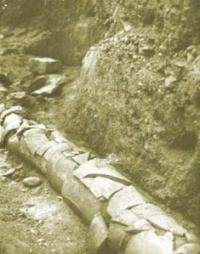
Historic Sites on the Silk Road of Central Asia.
«Memory is the treasure house of the mind wherein the monuments thereof are kept and preserved»
Thomas Fuller.
A trip from Almaty to Sairam.
The village of Sairam is the oldest settlement on the territory of southern Kazakhstan. Located on the Sairam-Su river, 15 kilometers east of the city of Shymkent in the Sairam district of Turkestan region. In the era of the early Middle Ages (IX - XII centuries), on the site of Sairam was the city of Ispidzhab - the center of the eponymous district, which was part of Maverannahr.
His district also included Chimkent. The first mention of Ispidzhab appears in the geographical work of the Chinese author Xuan-Jiang in 629. Since the 13th century, the city is known as Sairam. Sairam - “City on the White River”.
In Russian historical documents, the mention of Sairam appears at the end of the 17th century. The development and formation of Sairam was determined not only by its favorable economic and geographical position, but also by its political position.
On the caravan route from Shasha (Tashkent) to Chimkent, as well as the outpost of the spread of Islam in the adjacent steppe regions. On the coins of the 10th century there are stamps of the Sairam Mint, which suggests that Sairam was a large and economic, political and religious center.
There are many mazars and mosques in the preserved hillfort. In the modern planning structure of Sairam, the contours of the ancient shahristan and the cross-shaped planning scheme of the streets are preserved, it is a monument of the urban planning culture of Central Asia of the IXth - XIXth centuries.
In the era of caravan trade, the significance of another ancient city was great - Ispidzhaba, or Sayram. Not a single traveler could do without a description of this glorious city and its wealth. Merchants from different countries, envoys from Bukhara and Samarkand stayed there.
The city survived the Arab invasion, the devastating wars with Khorezm Shah Muhammad and the Karakites, the Dzungarian invasion under Tauke Khan. Now reminiscent of this are the once-sweeping powerful once-fortress walls and bastions, the preserved minaret of the destroyed mosque.
In the historical chronicles of the 9th-10th centuries, Ispijab was called a first-class military fortress. In the fight against the Arab invasion, the city bravely defended itself and formally recognized the power of the conquerors. Caliphate, having extended his rule in the Pyrenees. North Africa.
The Near and Middle East imposed a burdensome land tax on the conquered peoples with haraj. The only exception was made for Ispijab. The Arabs were forced to agree that Isijab would limit itself to a purely symbolic tribute to Baghdad.
For independence and dignity, the Arabs called Ispidzhab one of the best cities in the East, respectfully calling it the White City. Many disasters fell upon Ispidzhab after the devastating wars with Khorezm Shah Muhammad and the Karakites.
Nothing remains of the beautiful gardens and fortifications, except for the destroyed walls, ruined trees and the disappeared people. In the XV century, the city was reborn again under the new name Sairam and was again built with powerful fortress walls, a moat.
To strengthen the defense of the main citadel, new fortifications are being erected. One of them was called Chimkent, which means a fortress built of turf. The exact date of the construction of the fortress is unknown, but we learn from the Book of Victories of the great Timur that in 1366, while moving from Tashkent to Sairam, the emir connected with his forward convoy in Chimkent.
This is the first mention of the city, like a shield covering the southern approaches to Sairam . Over its thousand-year history, Isjidjab - Sairam - has repeatedly met face to face with enemies and each time fought courageously, stood to the end.
So it was during the years of the Dzungarian invasion under Tauke Khan. Before the superior enemy forces, one after another the walls of the fortresses of Semirechye collapsed. And only Sairam rose an insurmountable obstacle in the way of the conquerors.
Three years, fighting off numerous and furious attacks of the Dzungars, the besieged garrison of Sairam heroically fought. His defenders did not lay down their arms even after the enemy managed to break into the city. They died fighting in its streets.
The revenge of the winners was cruel. The city was put to fire, its inhabitants - to death. After the destruction of 1684, Sairam was no longer able to return to its former greatness. Isjidjab - Sairam - for many centuries served as one of the most important economic, cultural and political centers and left a deep mark in the history of Kazakhstan.
To a large extent, he contributed to the consolidation of nomadic and agricultural Turkic tribes, the formation of the Kazakh ethnic group. But the Dzungarian pogrom, the years of great disaster, Kokand rule did not pass without a trace.
Sairam turned into an ordinary Kokand fortress, which in September 1864 was recaptured by Russian troops and annexed to Russia.
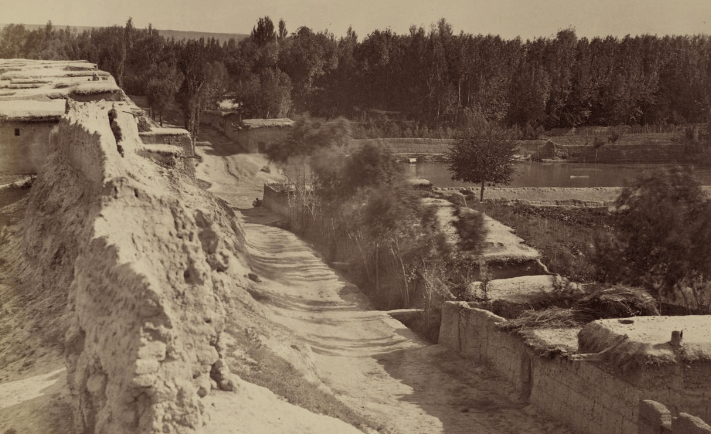
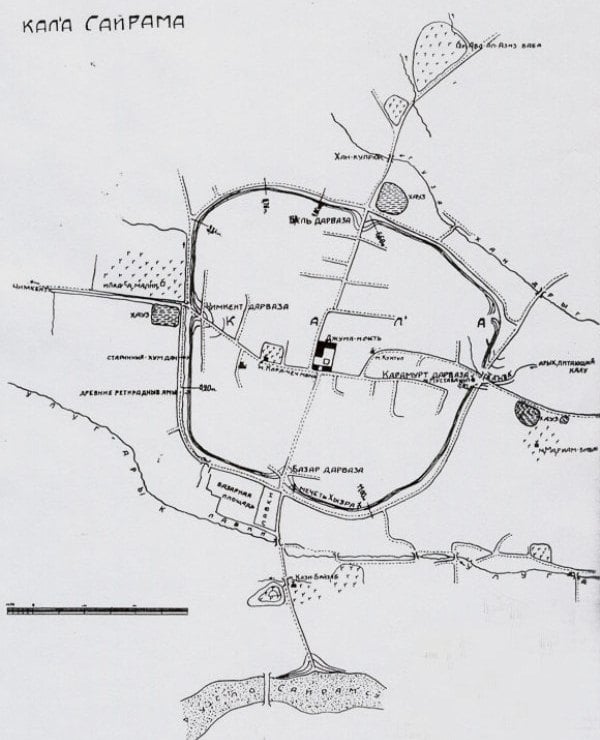
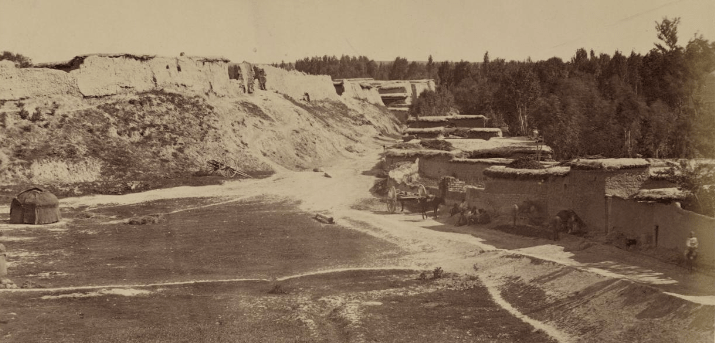
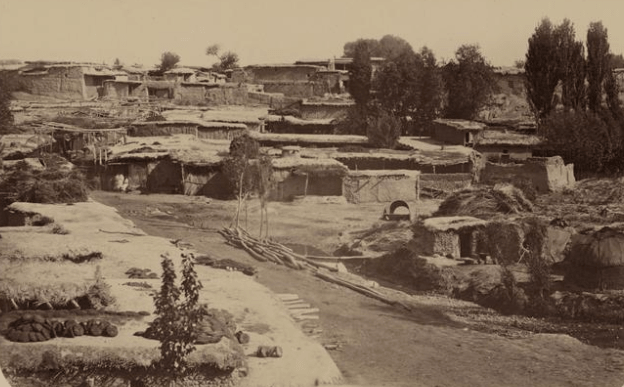
Authority:
"Code of monuments of the South Kazakhstan region." Architectural and archaeological heritage of the South Kazakhstan region. In the framework of the regional program "Cultural Heritage". http://www.farsah.kz
Photos
from Turkestan album.







